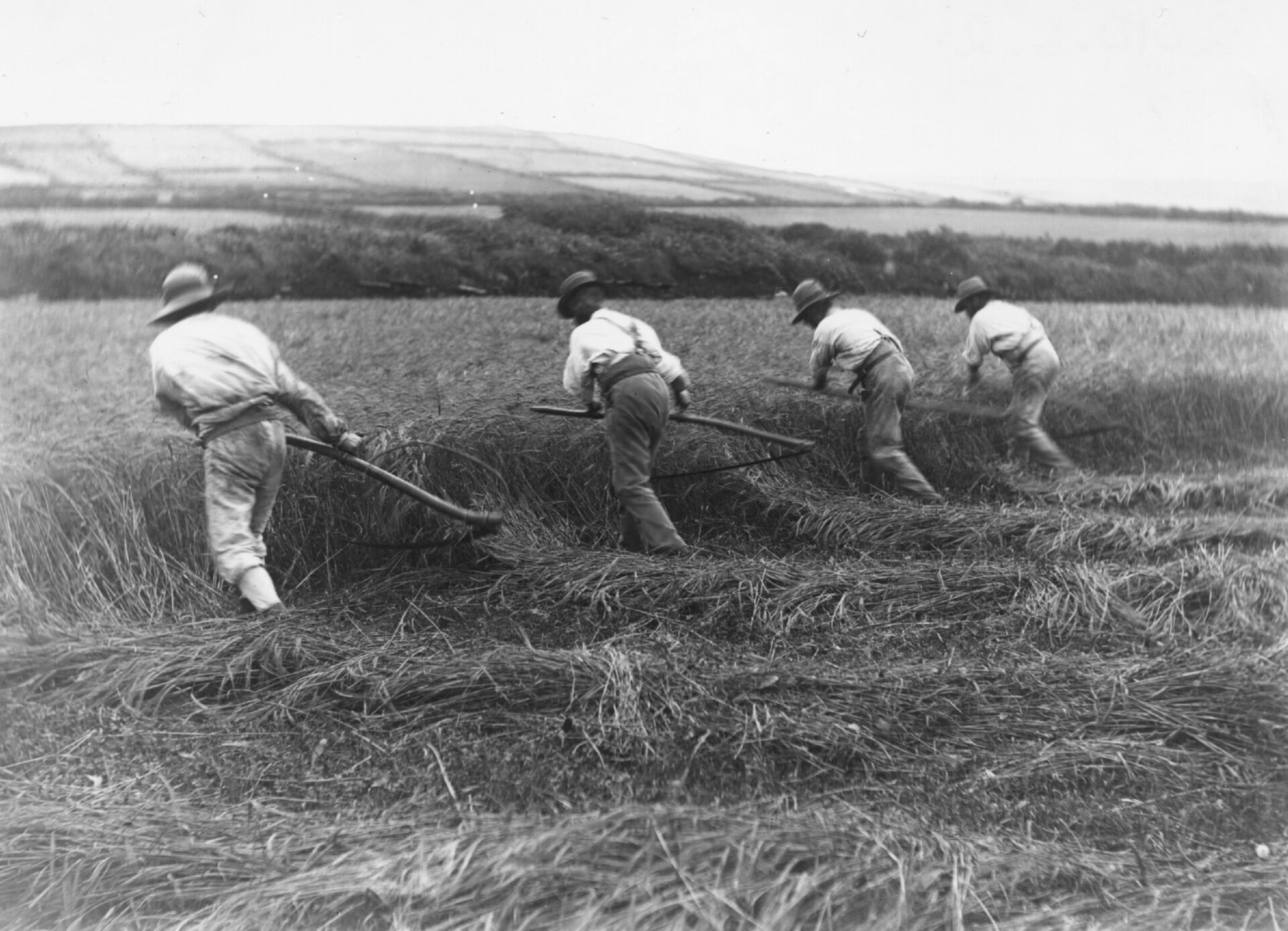
Harvesting History: The Rhythm of the Land
As we welcome the autumn equinox, it’s the perfect time to reflect on the rich history, traditions, and landscapes that define Sussex in this season of transition. Autumn has always held a special place in the heart of this county, a time when communities came together to harvest the fruits of their labour, celebrate the changing of the seasons, and uphold customs that have been passed down through generations.
Throughout Sussex’s history, the autumn season has marked the culmination of the agricultural year. The fields, so carefully tended through the spring and summer, would finally yield their crops, providing not only food for the winter months but also an opportunity for local communities to gather and share in the rewards of their hard work. Harvest time was often the busiest and most important time of the year for the many farming families that populated the county’s rural areas.

The traditional harvesting methods illustrated in this photo from the Society’s extensive archive, which shows men using scythes on the South Downs, reflect a way of life closely connected to the natural rhythms of the land. Before the advent of modern machinery, manual labour was the primary means of gathering crops. Scythes were used to cut long swathes of wheat, barley, and other grains, and entire communities would join in, working together to ensure that the crops were brought in before the weather turned.
Hilaire Belloc, a long-time resident of Sussex and one of its most passionate chroniclers, once wrote about the connection between the people of Sussex and their land. In his book “Sussex” (1950), he reflected on the enduring traditions of farming and harvest in the county:
“In the valleys of Sussex, men once worked with the land, not against it. The long lines of scythes, cutting through wheat and barley, followed the contours of hills and fields shaped by generations. In the harvest, one finds the true spirit of Sussex, a place of ancient rhythms and unbroken continuity.”
Belloc’s words capture the timeless nature of these agricultural practices, where the tools and techniques, passed down through centuries, were as much a part of the landscape as the rolling hills and fertile fields. This sense of working “with the land, not against it” highlights the balance that existed between human labour and nature’s cycles – a relationship that defined not only the harvest but life itself in Sussex’s rural communities.
Sussex and its land
In reflecting on these traditions, we are reminded of the deep connection between the people of Sussex and the land they worked. The practices of the past may seem distant, but the rhythms of the seasons and the significance of the harvest continue to shape the region today. As autumn unfolds, it is a time to remember those who toiled on the land, preserving their customs, and appreciating the beauty of Sussex during this season of transformation.
At The Sussex Archaeological Society, we take great pride in preserving, protecting, and celebrating Sussex’s rich heritage. From our extensive and unique collections and specialist library to our annual research publication, Sussex Archaeological Collections, we are committed to safeguarding the county’s history. We care for seven significant heritage sites, engage in ongoing research, and host our seasonal autumn and winter talk series, all aimed at deepening understanding and appreciation of Sussex’s past.
How you can support our work
– Join us as a Member from less than £4 per month
– Visit our remarkable heritage properties
– Consider making a donation – every contribution, large or small, makes a difference
– Sign up to receive our e-newsletter below for regular news and events
